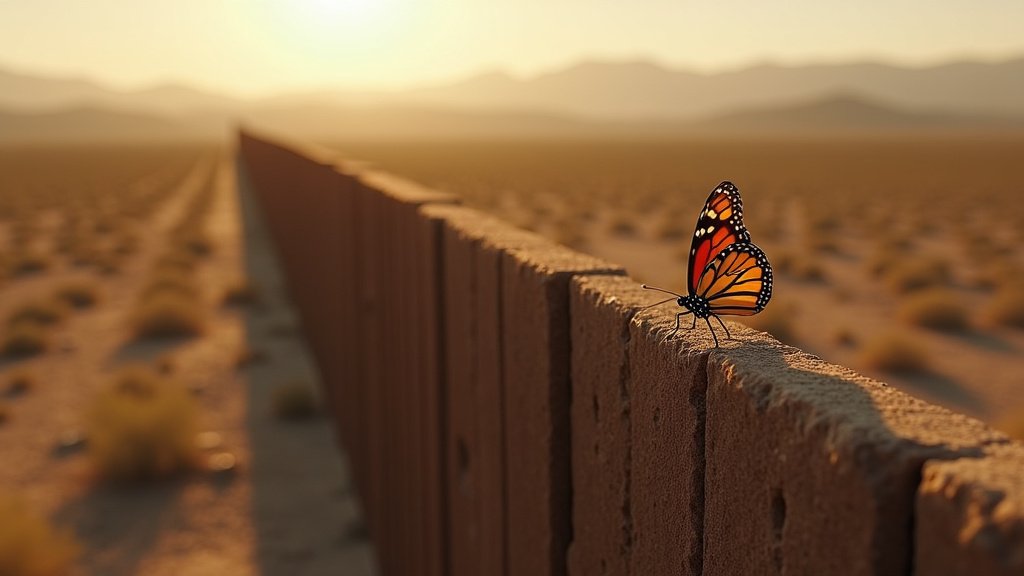The stark, imposing structures of the U.S.-Mexico border wall, designed to impede human migration, are increasingly recognized for their profound and often overlooked impact on the delicate ecosystems they bisect. Environmentalists and scientists are raising urgent alarms about the perils these barriers pose to vital pollinator species that navigate the region’s rich biodiversity hotspots. This evolving news highlights a growing concern for the intricate web of life that spans the nearly 2,000-mile border.
The Expanding Barrier and Its Ecological Footprint
For decades, the construction of border barriers has intensified along the U.S.-Mexico border, fragmenting landscapes and wildlife corridors. While the primary objective has been border security, the methods employed have frequently bypassed or waived critical environmental regulations, including the Endangered Species Act and the National Environmental Policy Act (NEPA). This has led to the construction of hundreds of miles of walls, vehicle barriers, and associated infrastructure, often through highly biodiverse areas like the Sonoran and Chihuahuan Deserts. Between 2017 and 2021 alone, over 450 miles of barriers were built, with much of it replacing older, less restrictive fencing. Current plans continue to push for expedited construction, with over 100 miles of new barriers funded and in various stages of development across multiple U.S. Border Patrol sectors [cite: Initial Context, 22].
Pollinators’ Perilous Journey
The impact of these barriers on pollinators—insects like bees, butterflies, and moths that are essential for plant reproduction—is a significant and under-researched concern. While larger animals often capture headlines regarding habitat fragmentation and reduced movement, the challenges faced by flying insects are equally critical. Recent studies have observed that while many pollinators can fly over barriers, some species encounter significant difficulties. Butterflies are most frequently seen flying over walls or, in some cases, retreating or flying parallel to them. Moths have been documented crawling through wall slats or flying parallel to the barrier, with a notable percentage not crossing at all, especially on windy days.
A Critical Biodiversity Hotspot Under Threat
The U.S.-Mexico borderlands are far from desolate; they represent some of North America’s most biologically diverse regions, including vital conservation hotspots. These areas host an array of pollinator species. The Chihuahuan Desert, for instance, is home to an estimated 500 bee species, representing a substantial portion of the United States’ total bee diversity. Many native bee species found in southern Texas are rare or unique to the U.S.. These pollinators play an indispensable role in sustaining native plant communities, which in turn support myriad other wildlife species. The monarch butterfly, a species currently under federal review for endangered status, relies on these borderlands as a crucial migratory corridor and breeding habitat.
Beyond Flight: Habitat Loss and Fragmentation
The construction of the border wall involves more than just erecting a physical barrier; it necessitates the clearing of thousands of acres of native habitat. This destruction of vegetation, coupled with the creation of service roads and patrol areas, leads to habitat fragmentation, soil erosion, and altered hydrological processes. Such fragmentation isolates pollinator populations, reducing their access to essential resources and hindering gene flow and pollen transfer between plant populations. This disruption can trigger a cascade of negative environmental effects, impacting the overall health and resilience of these fragile ecosystems.
Implications for Conservation and Future Trends
Scientists and conservationists warn that the border wall’s impact extends beyond immediate ecological damage, threatening decades of binational conservation investment and potentially leading to irreversible biodiversity loss. While studies often highlight the struggles of larger mammals like jaguars and mountain lions, the plight of pollinators underscores a broader environmental crisis unfolding along the border. The news surrounding these ongoing construction projects and the waivers of environmental protections underscores the urgent need for comprehensive assessments and mitigation strategies. As border security policies continue to evolve, the ecological consequences for some of the continent’s most vulnerable species remain a critical, trending concern for the US and its neighbors.






